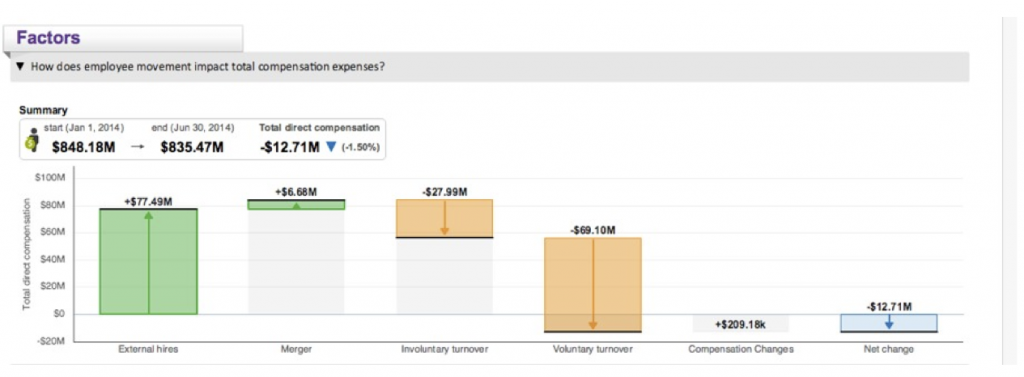Employees are valuable. They’re also expensive (typically 70% of total business expenditure). It’s no surprise, then, that many businesses look to restructuring to cut workforce costs.
But how can we know where the costs should be reduced? We don’t want to remove employees who positively contribute to the bottom line, as in the long term we’ll be worse off than where we started (cost-cutting at its worst!)
The answer is in analytics. As an example, let’s have a look at how Marin Company, a fictitious company, used workforce analytics to cut workforce costs.
Step 1: Work out why you’re really trying to cut costs
It seems obvious, but we need to work out the ultimate goal of this exercise. Is it to reduce costs in a particular area of the business? Could we look at ways to increase revenue rather than decrease cost and get a better outcome?
The desired end result will determine the best course of action, so make sure you’re 100% certain you understand the underlying business goal.
For Marin Company, the initial brief was to reduce workforce expenditure. They achieved this, reducing jobs in the workforce to the value of $27.99M, which resulted in a net $12.71M reduction in quarterly workforce expenditure. However, the bottom line for Marin did not improve.
Step 2: Find out where the costs are (and where they should be)
Curious as to why not all of the savings were reflected in the net result, HR undertook some further analysis.
 By analysing the data with workforce analytics, Marin Company found that in restructuring the workforce, they had increased voluntary turnover from high performers by an additional 34% – which meant hiring costs had increased to $77.49M.
By analysing the data with workforce analytics, Marin Company found that in restructuring the workforce, they had increased voluntary turnover from high performers by an additional 34% – which meant hiring costs had increased to $77.49M.
Yes, net workforce expenditure had decreased, but now the expenses were primarily for inexperienced new hires instead of experienced, high performing talent.
Clearly, the costs should be focussed the other way around, as those high performers provided the highest return and had the biggest impact on the bottom line.
Step 3: Strategically cut workforce costs and reallocate funds
For most businesses, workforce analytics will have identified where unnecessary funds are being wasted on low-performing employees, be it a particular department, a type of person, an age range or even a location. But what do we do with this insight?
For Marin company, management realised wholesale redundancies weren’t going to deliver the desired result. Instead, HR chose to:
– Increase rewards for high-performers to discourage turnover
– Decrease workforce size for low-value business units, outsourcing some low-value high-cost activities.
– Host additional training sessions for up and coming talent, as they were found to be a high turnover chance if not adequately trained.
In the Marin example, this resulted in a net 11% reduction in workforce expenditure over the course of a year. It also led to less turnover, higher output per employee and a happier workplace.
Of course, in our example, Marin company only utilised workforce analytics as a form of damage control. What is far more effective is to use this data before undertaking any action, to make good decisions based on good data.
Have you been put in the situation Marin Company’s HR department were in? How could workforce analytics have assisted you in the decision making process?
If you’re looking for a tool to help cut workforce costs – get in touch with our team, we’d be happy to help.



